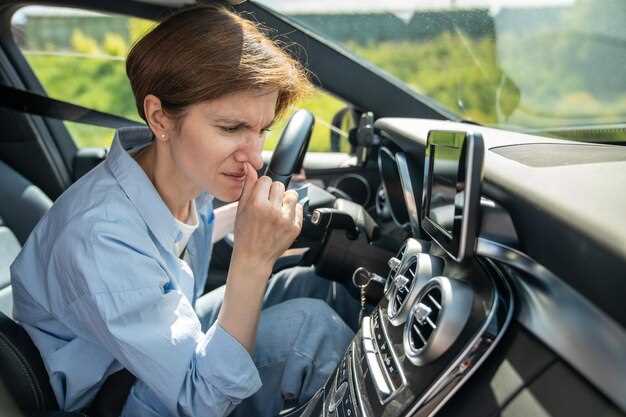What to do if your engine fails during a trip

Experiencing an engine failure while driving can be a terrifying situation, often leading to panic and uncertainty. However, knowing the right steps to take can significantly improve your safety and help you manage the emergency effectively. This article will provide essential tips for handling engine failure, ensuring that you remain calm and take appropriate action.
Your first response after realizing your engine has failed is crucial. Understanding the symptoms of engine failure can help you identify the issue and take necessary precautions. It’s vital to maintain control of your vehicle and gradually reduce speed while searching for a safe place to pull over. By following these guidelines, you can minimize risks not only to yourself but also to other road users.
Once you’ve safely stopped your vehicle, it’s important to assess the situation. Knowing how to handle various engine failure scenarios, such as overheating or sudden loss of power, can guide your next steps. Whether it’s calling for roadside assistance or attempting to troubleshoot the problem, being informed will empower you during this emergency.
How to Safely Pull Over When You Experience Engine Failure
Experiencing engine failure while driving can be a stressful situation. Here are some crucial tips to help you pull over safely in an emergency.
First, remain calm and avoid panicking. Take a moment to assess your surroundings and identify a safe location to pull over. Look for a flat, level area away from traffic, such as a shoulder or parking lot.
Gradually reduce your speed by easing off the accelerator. Avoid sudden braking, as it can lead to loss of control. If possible, signal your intention to pull over by using your turn signal well in advance.
As you steer your vehicle towards the side of the road, keep both hands on the steering wheel to maintain control. Make sure to check your mirrors and blind spots to ensure that it is safe to merge into the shoulder or designated area.
Once you have safely transitioned to the side of the road, turn on your hazard lights immediately. This alerts other drivers that you are experiencing difficulty, allowing them to proceed with caution.
Finally, if you have a mobile phone and it is safe to do so, contact roadside assistance or emergency services for help. Stay inside your vehicle with your seatbelt fastened until help arrives, especially if you are on a busy road.
Immediate Actions to Take to Ensure Your Safety

In the event of an engine failure while driving, your primary focus should be on maintaining control of the vehicle and ensuring your safety. Here are essential tips to follow in such a situation.
First, remain calm. Panic can lead to rash decisions that may worsen the situation. Gently steer your vehicle towards the side of the road, aiming for a safe area away from traffic. Use your turn signals to indicate your intentions to other drivers.
As you approach a safe location, take your foot off the accelerator. Allow the vehicle to slow down naturally. Do not slam on the brakes, as this could cause loss of control. Instead, use the brakes gradually to reduce speed as you navigate to a safe stopping area.
Once you have safely pulled over, turn on your hazard lights to alert other drivers of your situation. This is crucial to avoid accidents, especially if you are on a busy road. If you have a reflective warning triangle or roadside flares, set them up to increase visibility.
After securing your position, assess the situation. If it is safe to do so, try to restart the engine. However, if the engine failure is severe or if you smell smoke, evacuate the vehicle immediately. Get to a safe distance, especially if you notice any unusual smells or signs of overheating.
If you’re unable to resolve the issue, contact roadside assistance or emergency services for help. Provide them with your exact location and details about the engine failure. Stay with your vehicle if it is safe to do so, as it is often easier for rescuers to find you there.
In summary, remain calm, steer safely to a stop, activate hazard lights, assess the situation carefully, and seek assistance if needed. Following these tips can significantly enhance your safety in the unfortunate event of an engine failure while driving.
How to Diagnose the Issue and Call for Assistance

When engine failure occurs while you’re driving, the first step is to remain calm. Safely pull over to the side of the road, if possible. Once your vehicle is stationary, assess the situation to gather as much information as possible about the symptoms of the failure.
Listen for unusual sounds coming from the engine, such as knocking or sputtering, and check for warning lights on the dashboard. If the engine has overheated, look for steam or smoke. These signs can provide clues to the nature of the problem.
Next, try to restart the engine. If it doesn’t start, consider whether you’ve run out of fuel, as this is a common but often overlooked reason for engine failure. Check the fuel gauge or attempt to smell for fuel. If these checks don’t indicate fuel issues, inspect the area around your vehicle for leaks or other visible signs of damage.
If diagnostics are beyond your skill set or if the vehicle remains unresponsive, it is essential to call for assistance. Use your mobile phone to contact roadside assistance or a tow service. Provide them with your exact location and a brief description of the engine issues you experienced, as this will help them prepare for your specific situation.
During an emergency, prioritize your safety and the safety of other drivers by activating your hazard lights as you wait for help. Keep a safe distance from the roadway, especially if stopping on a busy street. After assistance arrives, ensure you relay all relevant information to the mechanic to aid in a timely diagnosis and repair of the vehicle.




